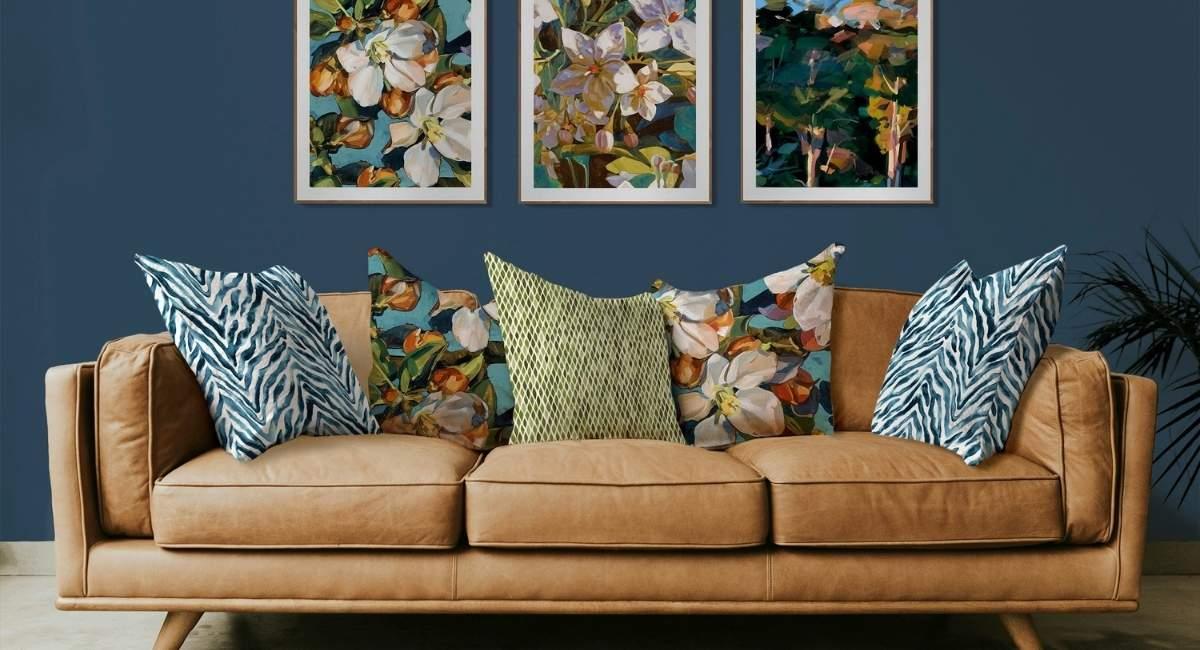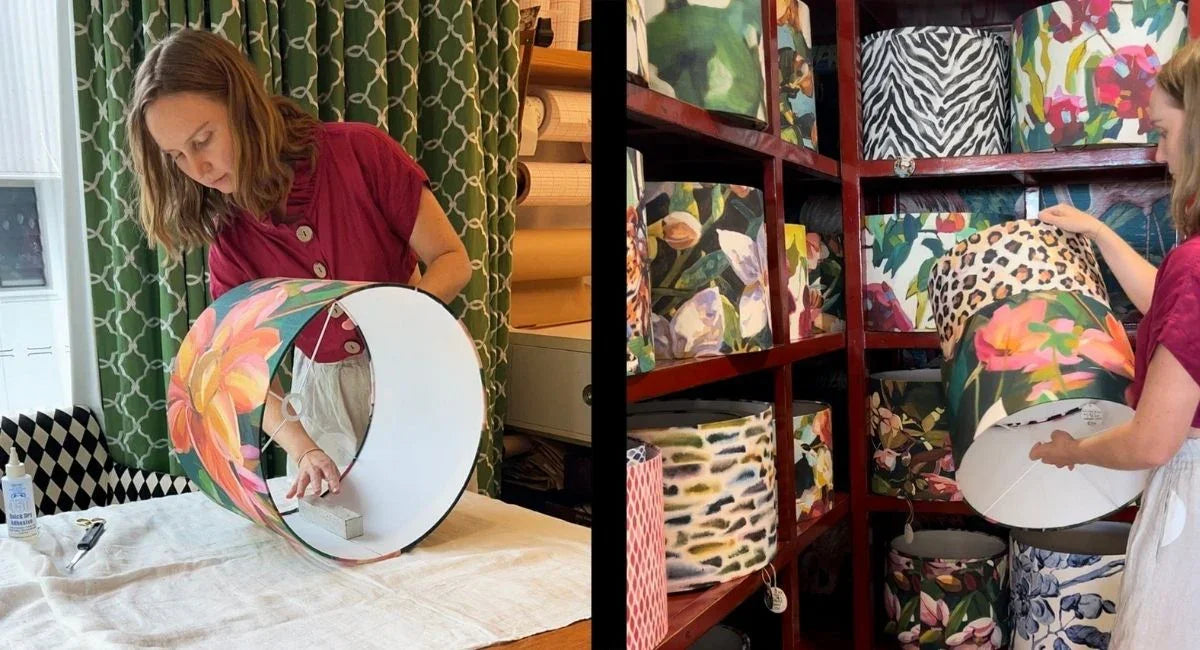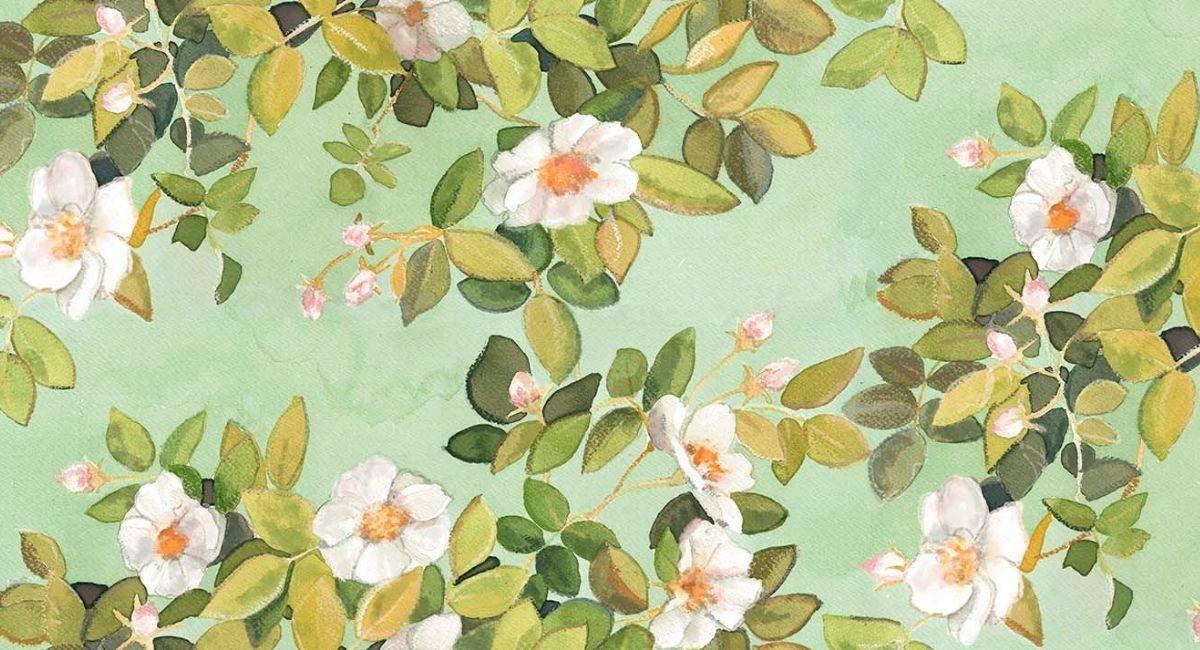
Rose Fabric Story: How an Original Artwork Becomes a Textile Print at Bowerbird Collections

Find out how an original artwork is transformed into a textile print at Bowerbird Collections and discover the inspiration and creative journey behind our latest fabric design, Rose. Adding to our growing collection of artistic textile prints, Rose invites you into a flourishing garden with plentiful new growth. The original artwork by Ellie Sweetman combines inks and oil pastels to create a relaxed modern interpretation of traditional botanical illustration.

THE FIRST STEP: Ellie’s inspiration and process of painting the original artwork for Rose.
Hear from Bowerbirds' Co Director and Artist Ellie, how Rose came to life.
ARTWORK INSPIRATION
A lot of the textile designs that we’ve created so far are complex and bold, and I wanted to explore something that’s a little softer and more delicate. Peta and I have always loved the exquisite hand painted wallpapers by de Gournay. In particular we're partial to the Chinoiserie Collection (image below) with beautifully detailed birds and flowers atop gorgeous aqua and green backgrounds.

I had no fixed outcome in mind but I wanted to try my hand at creating a delicate botanical painting with lots of breathing space to allow a gorgeous aqua background to shine through.
PAINTING MEDIUM
I chose to stray from my regular painting medium of oils, because I wanted to paint on paper and play with transparency. Although I could have used watercolour, I decided to experiment with inks that had been sitting in my paint supplies for years instead.

TIPS FOR GROWTH: Sometimes it’s fun to challenge yourself with an unfamiliar medium! There’s no pressure to be good at something you’re not familiar with, so you can let go and try new things more easily. If it works - hooray! If it doesn’t - it’s no big deal.

I had fun working with the inks, but the first layer was a little flat and needed more detail. Here I made a choice that changed the trajectory of the final piece.
Instead of following the traditional botanical illustration technique and using layers of watercolour and very fine brushes to create a highly detailed, precise painting, I decided to add detail with oil pastels. This completely changed the level of detail that was achievable – imagine trying to write with a crayon. But the loose, textured line work was refreshing and more my style and I love the unexpected results. Hooray!
MAKING THE TEXTILE REPEAT: Ellie’s process of turning a physical painting into a digital print file.
 With artworks on paper I simply scan them at high resolution and open them in Photoshop. Here I decide how I want the pattern to repeat. If I stagger the artwork the repeat is less obvious and the resulting design will look more continuous. With Rose I had two options to stagger the artwork:
With artworks on paper I simply scan them at high resolution and open them in Photoshop. Here I decide how I want the pattern to repeat. If I stagger the artwork the repeat is less obvious and the resulting design will look more continuous. With Rose I had two options to stagger the artwork:
BRICK
Where the pattern is staggered horizontally.
HALF DROP
Where the pattern is staggered vertically. I chose to make a half drop repeat with this artwork.
JOINING THE ARTWORK IN PHOTOSHOP

I use photoshop to join the artwork, but there are other applications that serve the same purpose these days. The aim of this step is to join the top and bottom of the artwork together so that there is no obvious line. The pattern repeat needs to be seamless. Sometimes I copy elements from within the artwork to cover parts at the edge that are “cut in half” at the join.

EDITING COLOURS
Now we edit the colours to create multiple fabric colourways. Peta and I always work together on this step because we both have a keen eye for colour, and we often have different preferences. We want all of our fabric designs to work together - so that you can build a harmonious fabric story by mixing multiple patterns together. We both wanted to explore more earth tones in this design, and we’ve been shooting for a great blue and white design for years. We managed to succeed on both counts with Rose.
 It's also important that the colours we choose work back with Peta's ceramic glaze range. This makes sure that future lampshades made with this new fabric design will pair well with Peta's ceramic lamps. Here you can see us matching complimentary ceramic glaze sample balls with each of the three Rose colourways: Winter, Spring & Autumn.
It's also important that the colours we choose work back with Peta's ceramic glaze range. This makes sure that future lampshades made with this new fabric design will pair well with Peta's ceramic lamps. Here you can see us matching complimentary ceramic glaze sample balls with each of the three Rose colourways: Winter, Spring & Autumn.
THE FINAL STEP: Printing the new textile design on fabric.
The final step is printing the new design onto fabric. We choose digital printing, because of its eco-friendly and sustainable practices. Each product has different fabric requirements, so we have multiple test prints to run on the different fabrics. But soon enough we get the intended colour response and we can start printing fabric to make lampshades, cushions and more :)

THE RESULT: Bowerbird Collections latest fabric design, Rose.
Our new Rose fabric is available by the meter and made into lampshades in store now, and soon to be online! Follow us to stay up to date with the online release.

Follow Bowerbird Collections
View Bowerbird’s full range of designer fabrics.
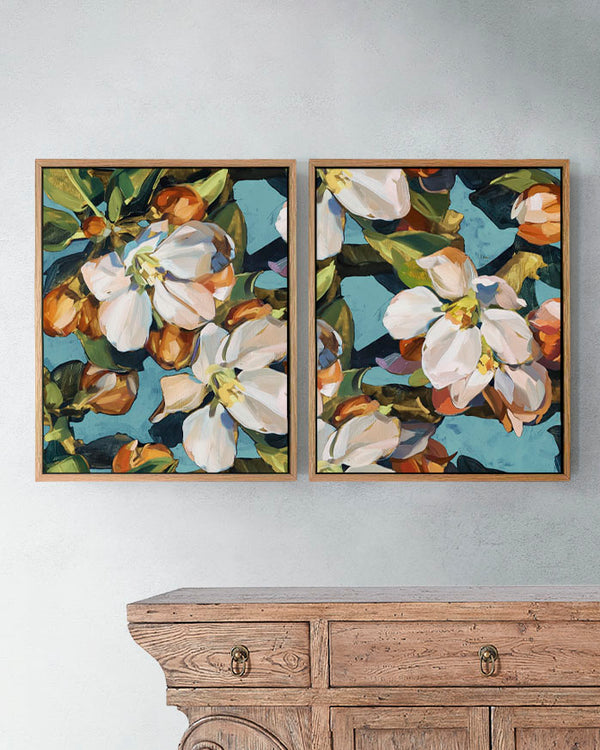
Blossom Aqua Fine Art Print on Canvas - Rectangular Duo - Fresh Floral Wall Art | Bowerbird Collections
$380.00
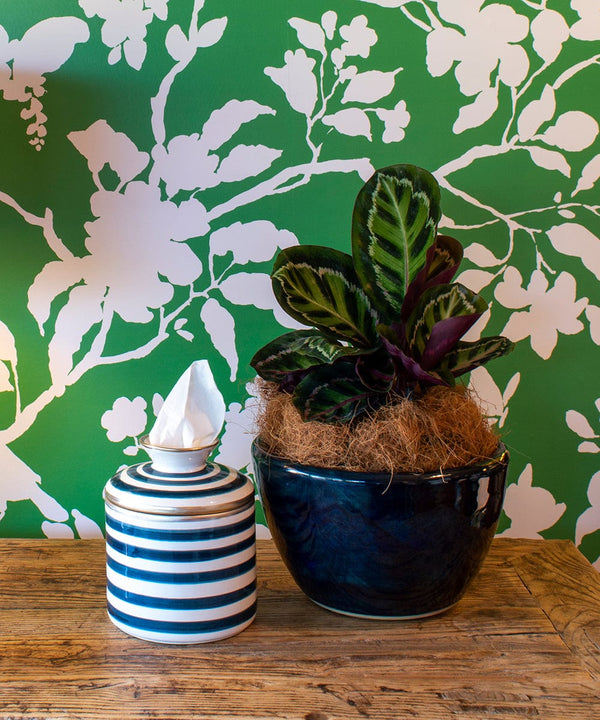
Chinoiserie Cutout Wallpaper – Elegant Botanical Mural | Bowerbird Collections
$325.00
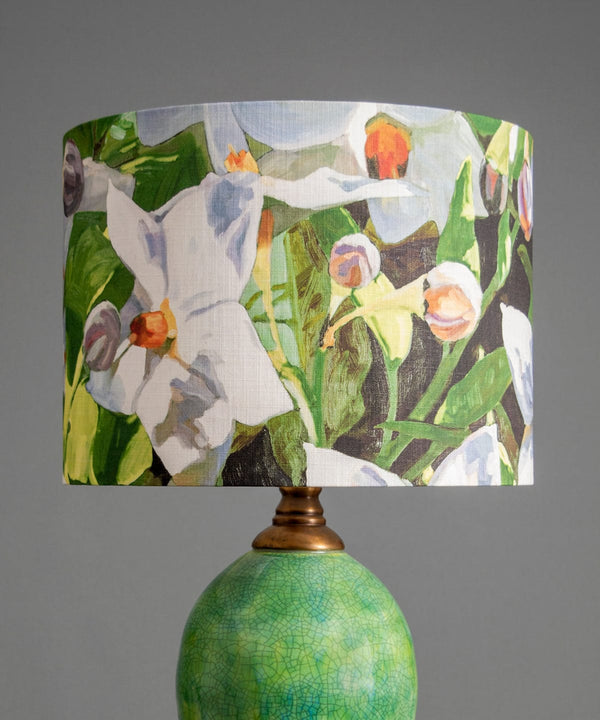
Amira Olive Lampshade – Handcrafted Lighting | Bowerbird Collections
$235.00

Blossom Navy Fabric – Classic Blue Floral Linen Cotton | Bowerbird Collections
$190.00

Blossom Navy Pillow Cover – 100% Linen | Bowerbird Collections
$119.00


